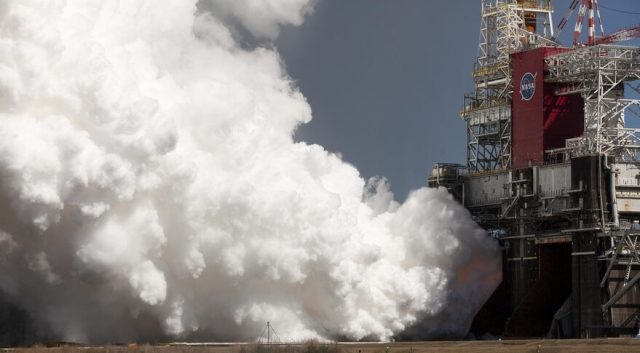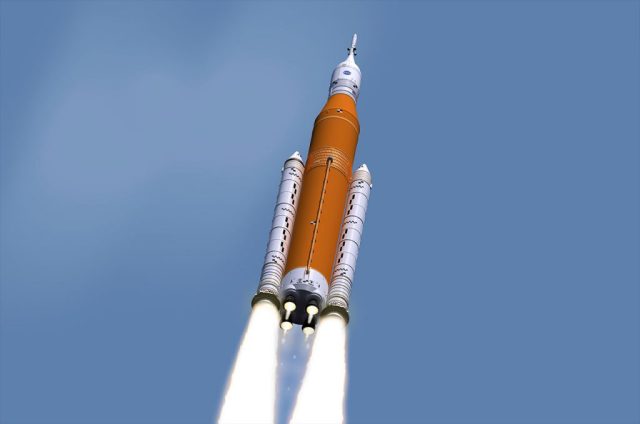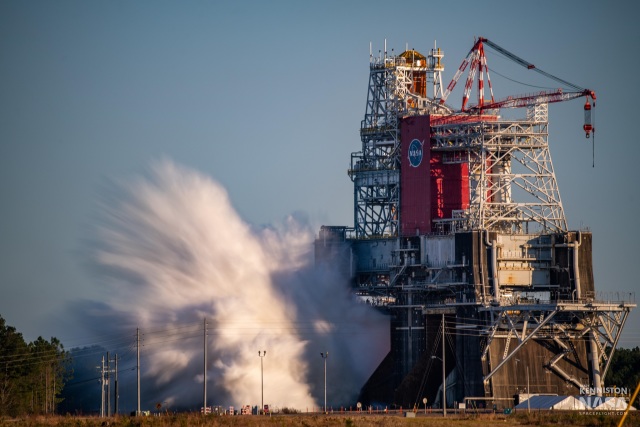The US Space Agency conducted fire tests of the engines of the Space Launch System (SLS) rocket, which in the foreseeable future should launch astronauts to the satellite of our planet. The carrier can make the very first start this year.
In the United States, the development of the most powerful rocket of our time — the superheavy SLS-continues. Yesterday, NASA conducted fire tests of the first-stage engines of this carrier on the territory of the John Stennis Space Center.
During the tests, the four engines ran simultaneously for about eight minutes. Prior to this, similar tests took place on January 16: instead of the planned eight minutes, the engines worked for about a minute. They were turned off by automation.

SLS Tests
Image source: NASA
The first launch of the SLS has been repeatedly postponed: it may take place in November - as part of the Artemis program, aimed at flying astronauts to the Moon with a landing (in the future) on its surface.
Last year, NASA and Northrop Grumman successfully tested a solid-fuel rocket booster for the Space Launch System, which further confirmed the high readiness of the carrier.

SLS
Image source: NASA
The first stage of the SLS has four RS-25D/E engines, a development of the RS-25 previously used on the Space Shuttle glider. The Space Launch System rocket in the basic version should put up to 95 tons of cargo into a low reference orbit (LEO). In the future, NASA wants to have a version of the increased payload capacity, which will be 130 tons.
About as much (or even more) should be brought to the LEO by a promising Russian "lunar" rocket of increased payload capacity, which they want to create on the basis of a superheavy carrier "Yenisei» . The prospects for the latter, however, remain vague.
Earlier, the concept of the rocket was criticized: experts, in particular, pointed to the lack of elaboration of the program and called for the establishment of additional goals and objectives for the carrier. Subsequently, it became known that Russian engineers have determined the new appearance of the rocket. According to the data presented, a batch scheme was chosen for it with six side blocks located around the central one. All of them will receive RD-182 engines, and the upper stage engine will be created on the basis of the RD-0169.
It is still difficult to say with certainty about the date of the first launch of the new rocket: presumably, it should be expected no earlier than 2030. Provided, of course, that the country does not refuse to create a "super-heavy".

